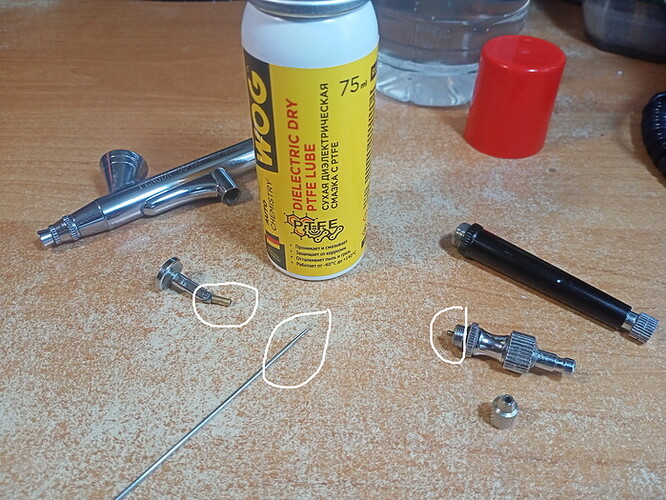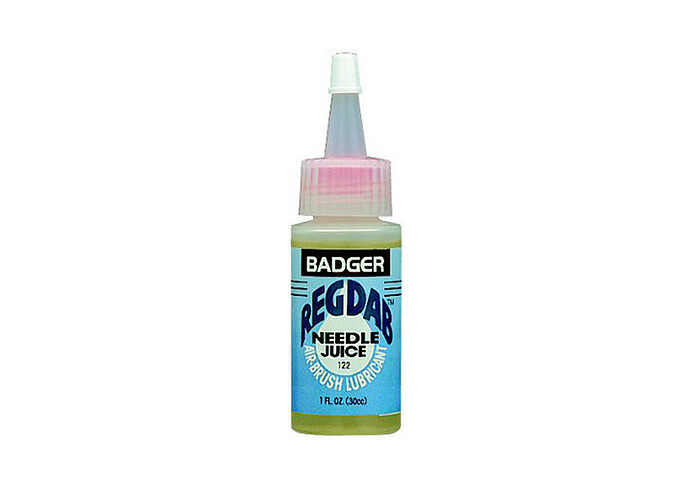I have heard that Mr Leveling Thinner works with enamels, but I’ve never tried that combination myself. Yes it does work well with Gunze lacquers, (of course) and superbly with AK Real Color lacquers (my favorite combo)… I suppose that I should give the Mr Levelling Thinner a shot with enamels one day… when my Testors Universal Enamel Airbrush Thinner runs out.
A pox upon the house of Rustoleum for discontinuing their Model Master products!!!
4 Likes
Sometimes, adding more thinner makes drying problems worse. A little retarder can be more useful. Thinning the paint is useful for getting the paint the right consistancy for the job you are doing. Additional thinner will just reduce the opacity of the paint. Thinner means you will have to reduce the pressure to prevent things like spider webbing. Retarder slows the drying time giving the paint a chance to level out.
1 Like
Carlos, I suspect you may find Mr Color Leveling Thinner works better than Testor’s Universal Thinner with the enamel Model Master paints.
Mr Color Leveling Thinner works better with my Floquil Military Colors & Floquil Railroad Road colors than their respective Floquil/Testor’s Thinners do.
2 Likes
Bomber, I keep a small sponge handy moist with lacquer thinner and I dab the tip and wipe it down periodically and that has cut my tip drying and clogging down considerably. I only paint w acrylics, Vallejo model color and model air and also Tamiya. That little cheat helps me out when I’m spraying one color with not much thinner in the paint on longer sessions.
3 Likes
yes montana but my issue is that after i clean the needle it is only one or two pulls of the trigger and paint flow is nearly gone again. i can’t do detailed camo or patterns when i have to stop every other pull of the trigger.
Joe
1 Like
greg i have retarder for acrylics, do they make retarder for enamels and lacquers? also, is MLT a form of thinner/retarder combination/
JOE
1 Like
I have a feeling that this is only typical for acrylic paints. That’s why I’m leaving them. The smell is not a problem for me.
It has already been recommended here to use silicone lubricant.
I also found recommendations for using Teflon grease. Looks like it’s sold in auto stores.
I also found recommendations for using Badger Airbrush Regdab.
This can be used to lubricate all the moving parts and seals in the airbrush. In particular, when lubricating the needle it helps against sticking. There are many videos on YouTube on this topic.
2 Likes
NEVER use a silicone lubricant in your airbrush! It will contaminate the interior of the airbrush causing fisheyes in the paintjob and will be impossible to strip out of the airbrush. Only use industry produced lube products such as Iwata - Medea Super Lube or Badger Regdab. If you get silicone in your airbrush, just throw it out.
Personally, I don’t use Super Lube in my airbrushes. I just keep them super clean and they work perfectly without lubrication.
3 Likes
Yes, Mr. Color Leveling Thinner has a retarder in it. That’s what allows the paint to self-level and gives you the outstanding finish.
2 Likes
Thanks for the warning. It’s good that my laziness did not allow me to already buy and use silicone lubricant!
3 Likes
Generally correct. However, with lower air pressure you should also reduce the flow rate or volume of paint (which usually means also dialing down the size of the spray pattern). The result of this is that you will usually want to get closer to the surface. Speed of application may also have to be increased to avoid runs and “spidering.”
The lower pressure atomizes the lower viscosity (i.e. “more thinned”) paint better, but it has difficulty managing a lot of volume. If you lower the air pressure and find that you’re getting “spatters” you should continue to reduce the flow rate (or increase the air pressure).
Viscosity, flow rate, distance, speed and air pressure are all inner connected and all have to be balanced to achieve good results. However, it’s not a totally random process. My practice is to select which variable is the priority for the result I want, set it and then adjust the others around that priority. Decide what you want to do, then change the variables to suit that purpose.
If you’re using a double action AB, remember that proper trigger control is also important - Push down for air, then pull back for paint. Push forward to stop the paint, then let up to stop the air. Down; Back; Forward; Up.
If you let off the air while the paint is still flowing (the needle is open), then you’ll get a more build up of paint collecting around the tip between “sprays.” The immediate effect is usually spatters on starting the next “spray,” and accelerated tip drying of that excess paint.
1 Like
Spider webbing paint… I have only had that happen with Gunze Mr Color paints. No other brand that I’ve used has ever had that result.
2 Likes
LOL! I wish I had taken pictures of the first model I ever airbrushed, ca. 1972… a Monogram M16 halftrack. Oh yea, brand new Badger AB, needle wide open, max air pressure (stuck that 'ol can of Badger ProPell in a bowl of hot tap water, ‘cause that’s what all the “cool guys” in the model magazines said to do, you know!), mixed up my paint. Thinning ratios? Ratios?! We don’t need no stinkin’ ratios!!! (Actually, it was more like, "You mean there are thinning ratios?)
LOL! First blast with the ol’ airbrush, and you want to talk about “spider webbing”?!!
Frustrating and disappointing to be sure… After I cleaned up my mess (which means after I cleaned up my whole room, while hoping and praying that my mom wasn’t going to stick her head in the door to check up on me… IIRC, that was a Saturday afternoon. Took me the better part of the whole next week to find my “modeling mojo” and work up the cohunes to take another (literal!) shot at airbrushing!
My next one, the old Monogram Jagdpanzer IV, wasn’t a lot better, but at least I got the Dunkle Gelb base coat on (with only some running), but the camouflage… more of that damned “spider webbing.” I didn’t even know what it was called, much less how to avoid it. Ah yes, the "good ol’ days back before the inner-web.
Pactra Model Military Colors in the little square bottles thinned with lighter fluid (which I now know is called naptha! LOL!).
Yeee ha! Game on!
2 Likes
Oh no Carlos you can spiderweb ANY paint with enough pressure and thin enough paint! It’s a nooby airbrusher’s rite of passage! I can’t remember the model number of my first airbrush but it was a Badger blue plastic external mix siphon feed. I was 10 years old. Of course powered by a can of Propel. I started out getting nothing and by the time I got the nozzle cranked up into the airstream so that it was actually throwing some paint, I was out of air. The LHS was a 20 minute bike ride and each can of Propel cost about half a small Tamiya kit so I only bought one. Money was tight and I didn’t know how little was actually in that can. When I got home I finally got the airbrush working in great clouds of paint but I had no knowledge of overspray. The tank was OD but so was my desk, my hands, my bedroom wall, and my pants. Man did I catch hell for that one. Went back to brush painting for quite a while.
3 Likes
That sounds surprisingly familiar, except a small outside table was involved, some grass and side walk ended up hull red.
1 Like

